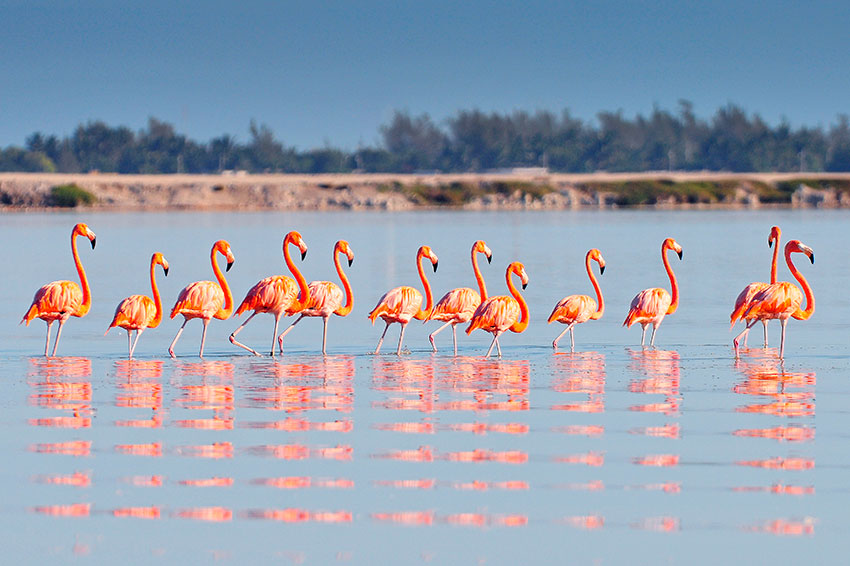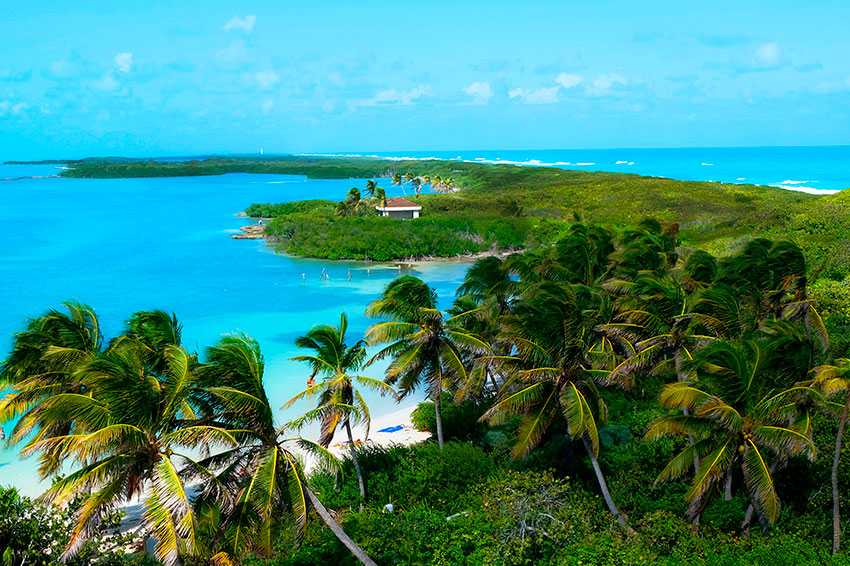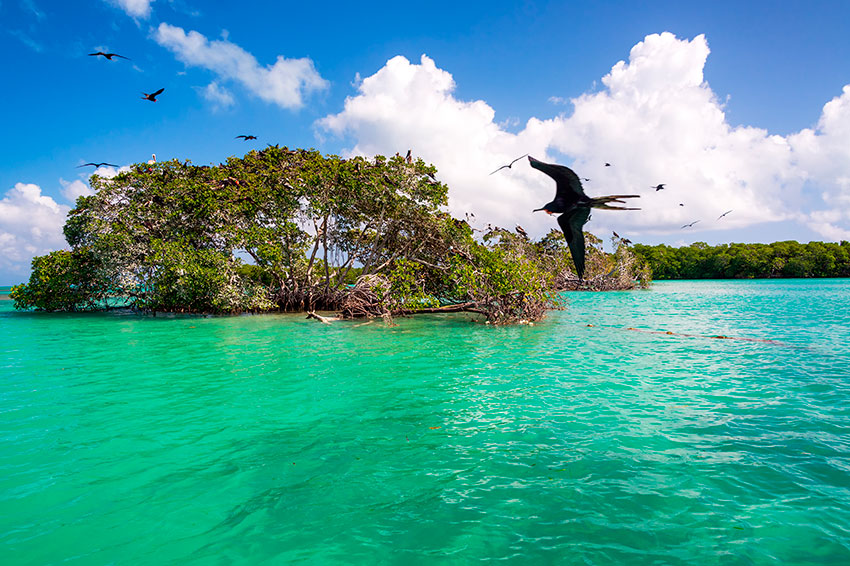If you want to explore the Yucatan this winter but without the crowds, here are some great nature trip ideas to think about. Visit Sian Ka’an or Ria Lagartos reserves, cruise to Contoy, and you don’t have to go that far, the Ruta de los Cenotes offers many sightings of colorful birds and other wild creatures.
While you may not see the elusive jaguar, howler or spider monkeys or the aquatic manatee, you will see birds on the coast, in the mangroves and everywhere you go in the jungle.
Mexico has 1,080 species of bird and is one of the world’s biodiversity hotspots and more than half the country’s species are found right here in the Yucatán Peninsula (550). They include tropical species such as the keel-billed toucan and temperate species from cooler climates and there are many endemic birds, found nowhere else on the planet.
One of the world’s great migrations
When temperatures began to drop in Canada and the United States more than 150 million birds take flight and head south for the warmth of the Yucatan following what is one of the world’s most important migratory routes for birds. The area’s coastal lagoons and salt flats and inland jungles welcome an additional 226 species of migratory birds, large and small, from birds of prey to waterfowl, waders and songbirds, a magnet for birdwatchers and nature lovers.
Some birds spend the winter season in the Yucatan or pause to feed and rest on the coast before continuing their journey south. Migrants include arctic terns, ospreys and wood storks. There are widgeon, teal, pintail, scaup and shoveler ducks, hawks and falcons, warblers and colorful finches like the painted bunting. The smallest migrant is surely the ruby-throated hummingbird that makes an incredible 30-hour journey across the Gulf of Mexico non-stop!
Birdwatchers and wildlife fans visiting the biosphere reserves of Rio Lagartos, Contoy and Sian Ka’an and other good birding spots are guaranteed plenty of winter sightings of colorful species in the mangroves and jungle.

Ría Lagartos Biosphere Reserve
First stop for many migrant birds crossing the Gulf of Mexico, Ría Lagartos Reserve on the Yucatan coast protects 60,348 hectares of mangroves, salt marshes, dunes and tropical forest that is home to jaguars, monkeys, crocodiles and 365 bird species, including North America’s largest nesting colony of Caribbean flamingo.
Fishermen from the waterfront village of Río Lagartos offer boat trips along the ria or estuary and through the mangroves to the flamingo feeding grounds. Many of them are trained eco guides and carry checklists to help you identify the birds you see. Keep a lookout for flocks of white pelicans that migrate from as far north as the Arctic Circle, reddish and snowy egrets, roseate spoonbills, skimmers, peregrine falcons and green and russet pygmy kingfishers.

Contoy
A two-hour boat ride to the north of Cancun, the island of Contoy is also known as la isla de los pajaros or “the island of the birds.”
Contoy has been a protected area since 1961, and was declared a national park in 1998. It is a refuge for 150 species of native and migrant birds, including one of the largest populations of brown pelicans in the Caribbean, a 5,000-strong colony of frigate birds and 3,000 double crested cormorants. Other residents include ten members of the heron family such as the great blue heron, snowy egret and the yellow-crowned night heron. During the winter months, the island is a refuge for migratory ducks, plovers, sandpipers, oystercatchers and other shore birds.

Sian Ka’an Biosphere Reserve
Straddling northern and central Quintana Roo, this UNESCO World Heritage Site comprises 1.3 million acres of tropical forest, mangroves, Caribbean beaches and a 110-kilometer-stretch of coral reef. The biosphere reserve was established by government decree in 1986 to protect these fragile ecosystems.
Protected by government decree since 1986, Sian Ka’an is home to 103 different mammals including the jaguar, ocelot, peccary, tapir, howler and spider monkeys, and the West Indian manatee. It also has one of Mexico’s largest crocodile populations and is an important nesting area for sea turtles.
Sian Ka’an is also home to over 350 species of bird and you are bound to notch up a respectable tally of sightings during a visit. Sixteen varieties of heron and egret – including the boat-billed, tiger and agami heron – nest in the mangroves, along with ibis, roseate spoonbills, wood storks and frigate birds. Flamingos can also sometimes be spotted feeding in coastal lagoons. Parrots, motmots, laughing falcon, great curassow and ocellated turkey are some of the forest dwellers. The reserve also has a large breeding population of ospreys and protects a tiny colony of the rare jabiru stork, the largest bird in the Americas, in the wetlands.

Ruta de los Cenotes, Puerto Morelos
Yet you don’t have to travel so far afield. An early morning birding trip in a jungle reserve on the Ruta de los Cenotes near Puerto Morelos offers the chance to see chachalacas, parrots, hummingbirds and flocks of Yucatan jays with their brilliant blue plumage. A soft whooping call and a flash of turquoise heralds the Yucatán’s own bird of paradise, the motmot that makes its nest in the limestone walls of cenotes.
Puerto Morelos bird guide Luis Ku says that between 250 and 300 bird species have been registered in the Cenote Route area. He says, “Birders can catch a glimpse of collared aracaris, several species of trogon, tanagers; there are pygmy and black and white owls and I know one place where you can see up to 12 keel-billed toucans gathering to feed on the fruit of the ramón or breadnut tree at dawn.”
Book your eco trips
Thomas More Travel can help you book trips to Sian Ka’an, Rio Lagartos and Contoy, Puerto Morelos birding trip and other reserves in the area.
Photos courtesy of Luis Ku
